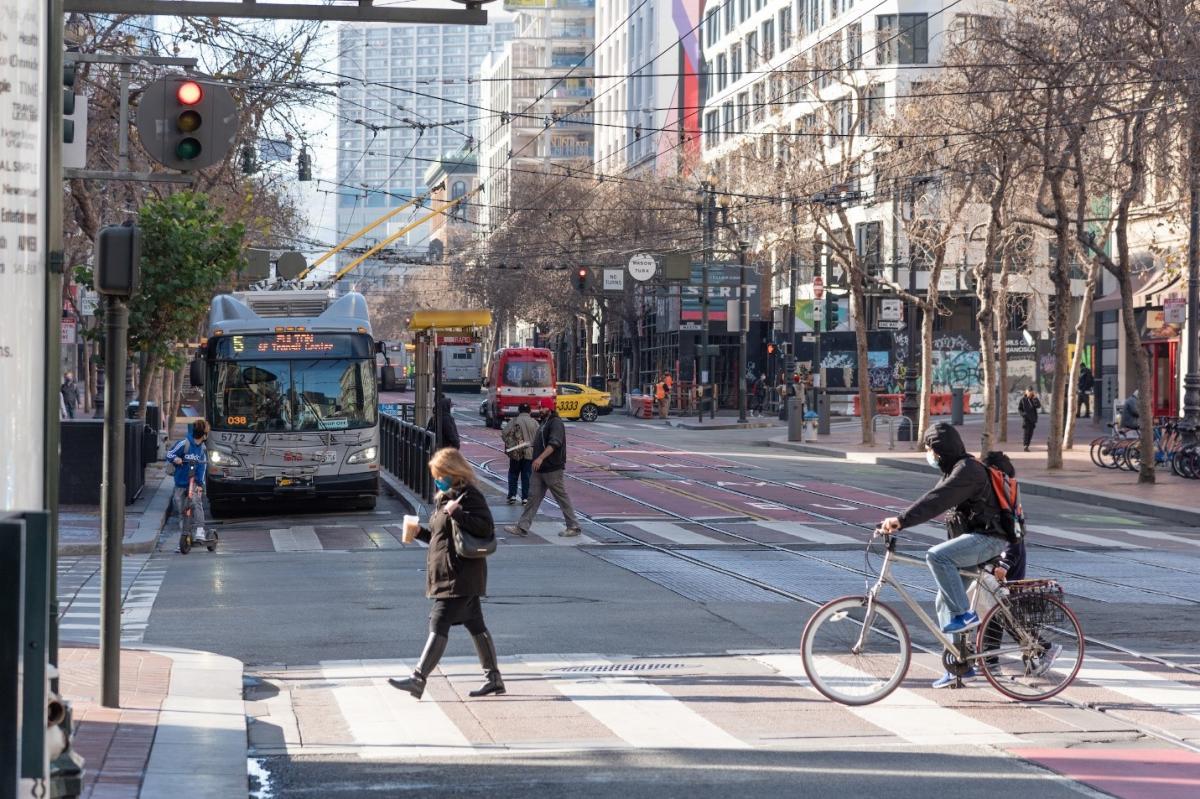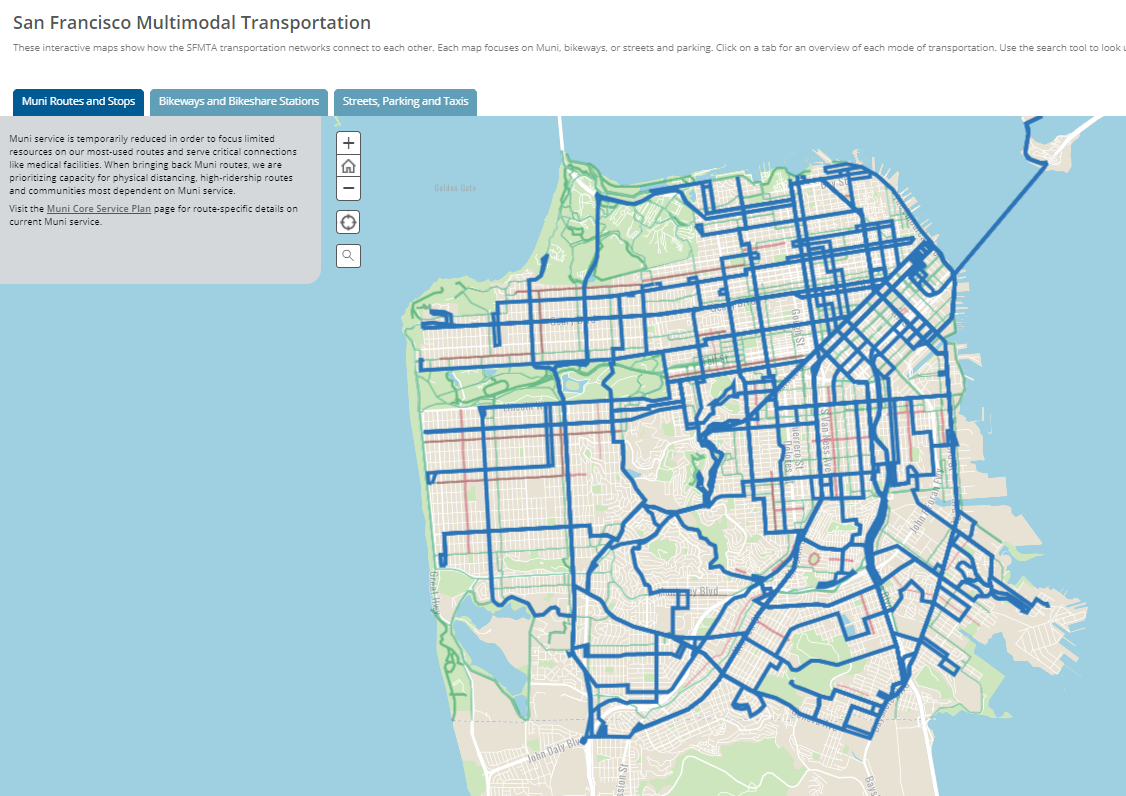By Sophia Scherr
Happy Earth Day! Established in 1970, Earth Day gave voice to the growing public consciousness concerning the environmental state of our planet, and the collective search for ways to save it. This determined effort for a better environment based on proactive strategies for slowing down the effects of climate change is more urgent than ever.

People travel on Market Street in many ways: as pedestrians, on bicycles, scooters, by taxi and by bus.
Riding Muni is a great choice for reducing your carbon impact, as the majority of our fleet is powered by hydro-electric power and does not generate CO2 emissions. The SFMTA has also committed to having an all-electric bus fleet by 2035: we will exclusively purchase all-electric buses starting in 2025 to meet that goal. This Earth Day, we’re encouraging riders to get out to explore one of the many alternate modes available for getting around San Francisco.
An “alternate mode” is a fancy way of describing activities such as walking, biking or scooting to get to your destination. As San Francisco begins the re-opening process, we expect more traffic congestion due to people eager to explore after a year of being sheltered-in place.
To better help you get around, we’ve put together resources that include an interactive map with Muni Core service information, San Francisco’s bike network of bike lanes, Slow Streets, bike share station locations, taxi stand and parking garage locations. There are also bicycling and walking resources, and even an online photo exhibition of the history of these modes in San Francisco. Visit SFMTA.com/GetGoing to plan your next alternate mode trip.
San Francisco Multimodal Transportation map
Published April 22, 2021 at 09:22PM
https://ift.tt/3ayexOx

Nhận xét
Đăng nhận xét